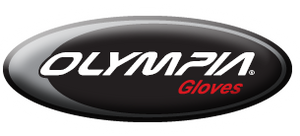Glove Company Q & A: How To Optimize Glove Fit
Posted by ROGER HEUMANN
A recent conversation with a glove buyer reminded us that sometimes, the easiest question can be the hardest to answer.
At the start of a new glove project, she asked for the overall measurements for 3 different types of gloves, to begin her initial design work.
Easy, right?
Even if the requirements of a glove change due to style, the basic dimension of a small, medium or large person’s hand doesn’t vary … does it?
Don’t all glove makers use the same basic size and hand measurements?
Well … yes and no.
The Holy Grail: “Ideal” Glove Fit
Consistent, excellent fit is one of the most important factors a glove company is judged on. That’s because it is extremely obvious, and important, to the consumer.
Just read this online customer review for a motorsports glove brand:
“ … I used the size chart and ordered a size medium … but it was too big. So I exchanged it …”
Of course, the size chart for the company where that example was taken from wasn’t “wrong”. And, the consumer’s basic hand measurements didn’t change, either.
But there are other variables at work.
To manufacture great fitting gloves for your customers, there is no “one size fits all” answer.
Glove Company “Recipe” For Best Fit
Imagine you were to ask a great chef how much seasoning to add to a soup. He or she’d say something like:
“… It depends … what other ingredients are in the soup”?
Of course, an experienced chef will be able to achieve the right outcome. And explain the process too – if not, there’d be no cookbooks. But there’s a reason why most recipes say “add salt and pepper to taste”.
Developing patterns for gloves are like that, too.
The explanation of how to get the best fit has to do with the materials used, the design, the dimension of a hand … and many other factors.
Here’s what we CAN tell you about glove fit: While the dimensions for a glove pattern is not standard, the process of developing a great fitting glove is.
Start With Basic “Platforms”
The starting point is usually a cross reference to an existing style. We call them platforms … but you can think of them as beginning recipes.
So instead of specifying a glove’s basic dimension, we prefer to reference an existing style that is similar as the new one, and incrementally develop it from there.
Once we know the 3 or 4 basic designs needed, and have some idea of materials, we can fill in the measurements.
Example: A Great Fitting Women’s Glove Line
For a project designing a women’s glove line, here’s the process we used.
First, we came up with 4 basic styles:
- Unlined glove
- Lined close fit glove
- Lined loose fit glove
- Cold weather glove
Then:
1. For the first prototype, we pulled out a known glove similar in look and construction to what this brand was aiming for.
2. Based on the materials chosen, we estimated:
increase/decrease in width across the knuckle between sizes
3. To finalize the “best fit” sample, we adjusted our proportions by small increments until the fit was “just right”. This final step is like adding salt and pepper to taste … or in our case, the glove maker’s “secret sauce”.
Bottom Line: No Standard Measurement Chart
Would it be helpful to have some basic formulas for the measurements by size, consistently across all gloves? Yes, it would.
But in our experience as a glove company, there are so many variables and customer preferences and styles that there is no single starting point. That’s why it helps to have the experience of a wide range of projects to draw from.
To learn what questions to ask your supplier about fit, and much more … download our free sourcing checklist, “10 Questions To Ask Your Glove Supplier Now”.
Or request a consultation. We’re here if you need us.
For a Glove Consultation
click here
Free Checklist
Download Now!
TAGS:






















